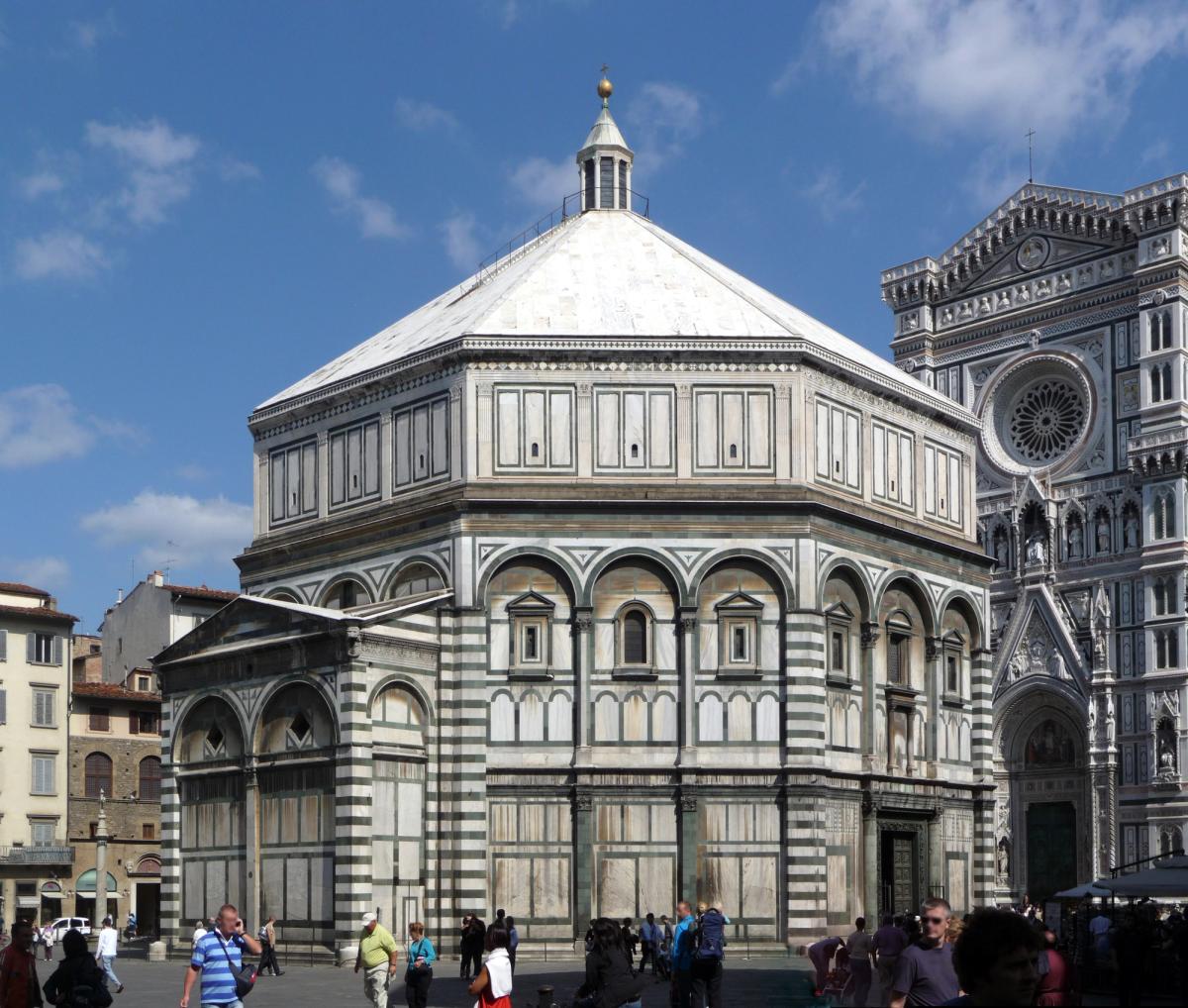It is an iconic landmark in Florence drawing hundreds of thousands of visitors every year, yet the origins of the Baptistery of St John have long been shrouded in mystery. Now new research has shed light on when—and how—the building came into being, suggesting it may have been part of a broader building programme that sowed the seeds of Renaissance architecture.
Located in front of Florence’s Cathedral, the octagonal Baptistery, with its golden ceiling mosaics designed by Cimabue and Coppo di Marcovaldo and internal decorations inspired by the Pantheon in Rome, is a centrepiece of the “proto-Renaissance”. Brunelleschi considered it a model of excellence, while Dante described it in his Divine Comedy as “My St. John the beautiful”. Before 1935, it contained the only baptismal font in Florence.
Yet writers have long disagreed about its genesis, with 13th- and 14th-century scholars claiming it had been built by the Romans—as a church, or a temple to Mars—before studies of its masonry in the 20th century suggested it had been constructed during the medieval period. Today, most claim that the Baptistery was consecrated in 1059, and its baptismal font moved in in 1128 following the completion of building works.
Those two dates derive from Firenze città nobilissima, written by the 17th-century art historian Leopoldo Del Migliore and a bestseller in its time. Elon Danziger, a former Renaissance paintings expert at the National Gallery in Washington, DC now based in Florence, explains in new research published in April that Del Migliore's theory quickly gained traction. “The lack of any even near-contemporary documents on the Baptistery made scholars desperate for any chronological anchor-point for its construction, and until now they have trusted Del Migliore,” Danziger says.
Consulting previously unknown documents at the Biblioteca Nazionale and Archivio di Stato, Danziger shows that Del Migliore had based his findings on a 17th-century list of miscellany rather than an original medieval document, as previously believed, and had probably misinterpreted a sloppily written sentence alluding to the consecration date. “Del Migliore was a bad historian, an execrable writer, and an outright fabricator [...] but he had a good feel for what the market wanted [and] Firenze città nobilissima flew off the shelves,” Danziger says.
Instead, Danziger proposes that the Baptistery was built in the same period as Florence’s Santi Apostoli and San Miniato al Monte churches, which were both constructed in the 1070s, citing similarities in their architectural styles. The three buildings, he adds, were probably designed by a single architect who hailed from the Pope’s entourage as the Vatican sought to bolster the waning Florentine Church with an ambitious building programme.
The result was the introduction of a new architectural style blending medieval and classical elements that drew heavily on religious buildings in Rome like the Church of Santa Maria in Portico. “Nothing in 11th-century Florence outside these three churches prepares you for them; everything is very conventional,” Danziger explains.
The three buildings, he argues, paved the way to later architectural splendours steeped in Classicism, including Brunelleschi’s 15th-century masterpieces, helping establish Florence as the centre of the proto-Renaissance. “The Baptistery of San Giovanni made our city fertile ground for the great cultural movement that centuries later would expand from the banks of the Arno to sweep the world,” Danziger recently wrote.


